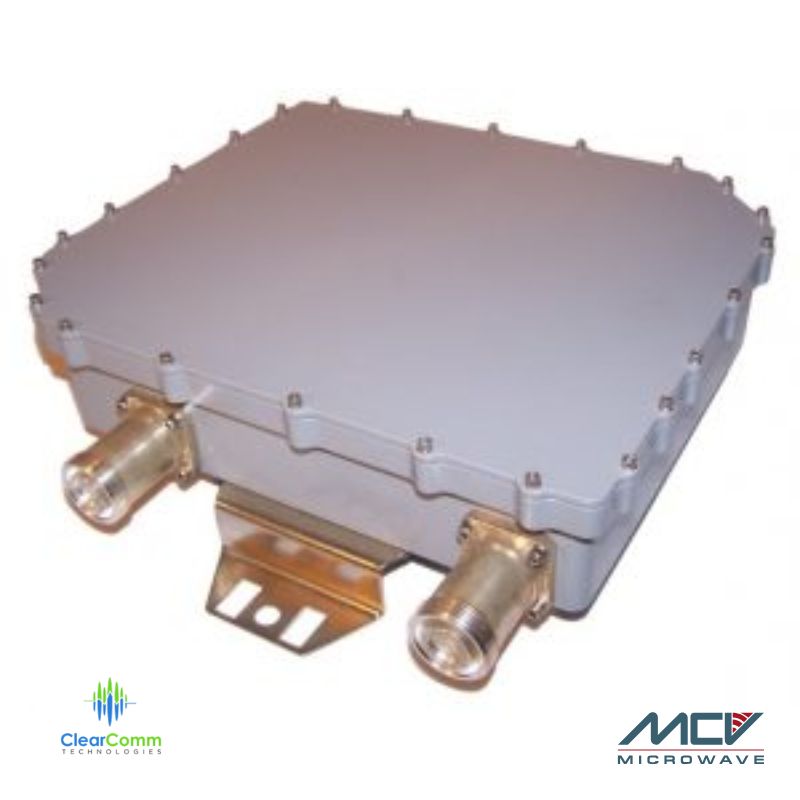Dual Band Combiners
Designed to combine signals from two distinct frequency bands into a single path, Dual Band Combiners are critical passive components for optimizing RF system architecture. They enable the simultaneous transmission or reception of multiple bands, reducing the need for separate antennas and minimizing system complexity — all while preserving signal integrity.
- Provides low-loss splitting (or combining) of separate frequency bands
- High Isolation / Low Loss
- Outdoor and indoor configurations

ClearComm Dual Band Combiners by MCV
ClearComm Dual Band Combiners by MCV deliver high isolation, low insertion loss, and excellent return loss across a wide range of frequency combinations. Engineered for performance and reliability, these combiners are housed in durable connectorized enclosures and built to operate in demanding environments such as wireless infrastructure, public safety communications, in-building DAS, and defense systems.
With precise filtering and rugged construction, MCV’s dual band combiners ensure efficient spectrum utilization and long-term performance in compact, high-demand RF deployments.
Dual Band Combiner models and band types
| Model Number | BAND 1 | BAND 2 |
| CCDP-902 | FM-960 | AWS-BRS |
| CCDP-802 | 600-850 | AWS-BRS |
| CCDP-836 | 700-800 | Public Safety |
| CCDP-665 | 600–700 | 850 |
| CCFA-430 | 700+AWS | 850+1900 |
| CCDP-234 | AWS | 1900 |
| CCDP-900 | 1900 | AWS+BRS+WCS |
| CCDP-844 | 1900 | WCS |
| CCDP-826 | 1900 | BRS |
| CCFA-815 | 700+AWS | WCS–BRS |
| CCDP-924 | L1 (basic GPS band) | L2 (Precision GPS Band) |
FAQ about dual band combiners
What is a dual band combiner and what does it do?
A dual band combiner is a passive RF component that combines two different frequency bands onto a single output or transmission path, allowing multiple bands to share one antenna or cable system without interference.
Why would I need a dual band combiner?
Dual band combiners reduce the need for multiple antennas or separate transmission lines, saving space and lowering infrastructure costs in multi-band communication systems like DAS, cellular networks, and public safety systems.
What are the key performance features to look for in a dual band combiner?
Important features include low insertion loss, high isolation between bands, low VSWR (Voltage Standing Wave Ratio), and rugged construction to ensure performance and reliability in harsh environments.
In which industries are dual band combiners commonly used?
They are widely used in wireless infrastructure, distributed antenna systems (DAS), public safety communications, defense applications, and any RF system that operates over multiple frequency bands.
How do MCV’s ClearComm dual band combiners stand out?
MCV’s ClearComm dual band combiners offer precision filtering, robust environmental performance, and high power handling in compact connectorized enclosures—making them ideal for mission-critical and high-density RF deployments.
How can I order ClearComm Dual Band Combiner from MCV Microwave?
To place an order for ClearComm Dual Band Combiner please contact us and we will help you!